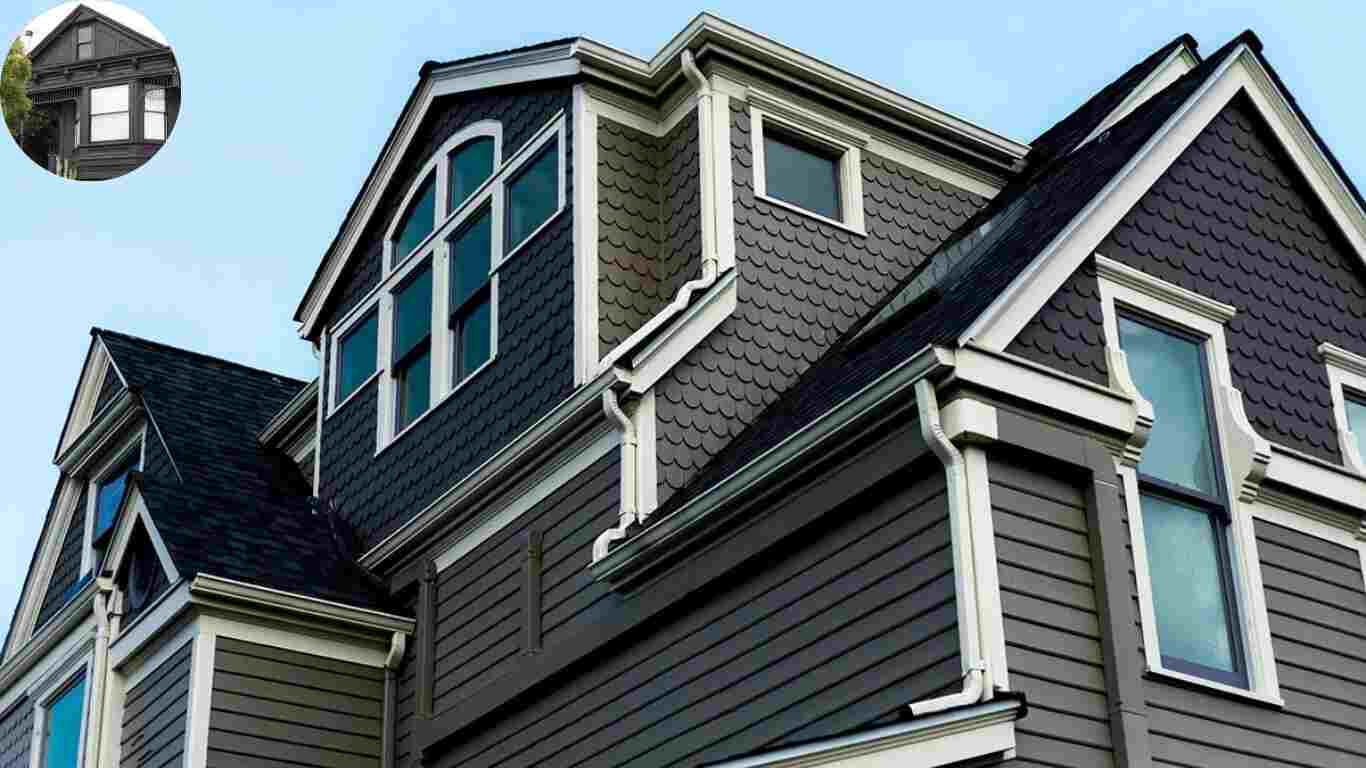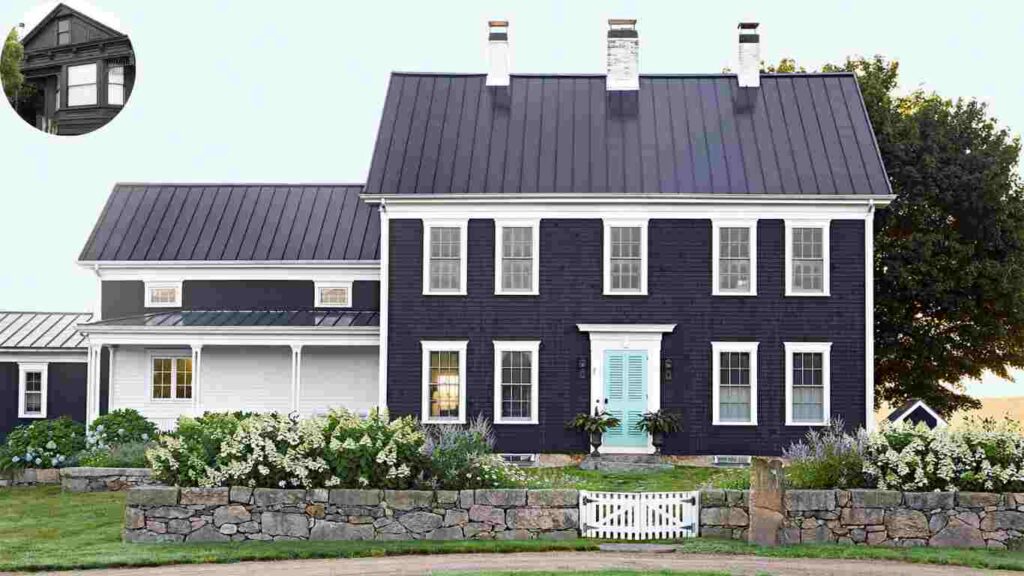In recent years, black-painted houses have surged in popularity. From modern minimalist homes to bold architectural designs, black exteriors are undeniably eye-catching and sophisticated. But when choosing a color for your home’s exterior, aesthetics aren’t the only factor to consider. Does painting a house black make it hotter? This question has sparked debates among homeowners, architects, and energy experts alike.
| Factor | Black Paint | White/Light Paint | Impact on House Temperature |
|---|---|---|---|
| Light Absorption | Absorbs up to 90–95% of visible light | Reflects most visible light | Black surfaces get much hotter |
| Surface Temperature | Can be up to 54°F (30°C) hotter than white in direct sun | Stays cooler under sunlight | Black-painted exteriors heat up faster |
| Energy Consumption | Cooling costs increase by 15–20% in hot climates | Lower cooling costs | More energy needed for cooling |
| Interior Temperature | Average increase of 5–7°C (9–13°F) in temperate climates | Lower interior temperature | Noticeable rise in indoor heat |
| Climate Considerations | Effect more pronounced in sunny/hot regions | Less impact in hot climates | Black paint not ideal for hot areas |
| Material Influence | Metal/concrete get hotter than wood when painted black | Less variation | Material choice affects heat gain |
| Insulation/Ventilation | Good insulation/ventilation can help mitigate heat gain | Less critical | Essential for black-painted homes |
| Aesthetic Impact | Modern, bold look | Traditional, neutral | Black paint can enhance appearance |
The Science Behind Color and Heat Absorption
How Color Affects Heat Absorption
To understand whether black paint makes a house hotter, we need to look at the science of light absorption and reflection. Colors interact with sunlight in different ways. Lighter colors, like white or beige, reflect most of the sunlight that hits them. This reflection keeps surfaces cooler. On the other hand, black absorbs up to 95% of visible light, converting it into heat.
Think of it this way: Imagine two black and one white cars sitting under the blazing sun. The black vehicle gets noticeably hotter to the touch. Similarly, when painted black, a house’s exterior absorbs more sunlight and heat than lighter colors.
The Physics of Heat Transfer in Buildings
Once the black-painted exterior absorbs heat black-painted exterior absorbs heat, it doesn’t just stay outside. Through heat transfer mechanisms, that heat can make its way into your home. Here’s how it works:
- Conduction: Heat moves through the material (e.g., wood, brick, or concrete) of the house.
- Convection: Warm air circulates within the walls or rooms, raising the interior temperature.
- Radiation: The heat absorbed by black paint radiates inward, contributing to a warmer indoor environment.
The color of your house plays a significant role in energy efficiency. Darker exteriors result in more heat gain, which can increase cooling costs, especially in warmer climates.
Real-World Data: Does Painting a House Black Make It Hotter?
Case Studies and Temperature Measurements
Let’s look at some real-world data to quantify the impact of black paint on home temperatures:
- Studies show that black-painted surfaces can be up to 54°F (30°C) hotter than white-painted ones under direct sunlight.
- Inside homes with black exteriors, temperatures can rise by 5–7°C (9–12°F) compared to homes with lighter colors, especially in temperate climates.
- Black-painted roofs and attics retain heat longer, meaning your house might stay warm into the evening.
These measurements underline a clear trend: Dark-colored exteriors significantly influence surface and interior temperatures.
You may also read(can houses)
Impact on Energy Consumption
Painting your house black doesn’t only affect your temperature but also your energy bills. Here’s how:
- Cooling Costs: Homes with black exteriors in hot climates experience a 15–20% increase in cooling costs during summer. Air conditioning systems must work harder to maintain comfortable indoor temperatures.
- Energy Efficiency: White or light-colored homes are more energy-efficient because they reflect sunlight, reducing the need for cooling.
While black paint might look stunning, it’s essential to factor in increased energy consumption’s long-term financial and environmental costs.
Factors That Influence Heat Retention
Local Climate and Geography
The impact of black paint varies depending on your region’s climate. For instance:
- In hot climates, black paint can make your home uncomfortably warm and increase energy usage.
- In cold climates, the extra heat retention can reduce heating costs, making black paint a more practical choice.
Sun exposure, shade from surrounding trees, and regional weather patterns also affect how much heat your home absorbs.
Building Materials and Construction
The type of material your house is made of significantly affects how it retains heat. For example:
MaterialHeat Absorption (Black Paint)Impact
Wood Moderate Warms quickly but cools down faster.
Concrete High Retains heat for longer periods.
Metal Very High Heats up rapidly and radiates heat efficiently.
Good insulation and ventilation are crucial. They help minimize heat transfer from the exterior to the interior, regardless of the paint color.
Paint Formulation and Technology
Not all black paints are created equal. Modern advancements in paint technology have introduced heat-reflective paints that absorb less heat, even in darker shades. These formulations can reduce surface temperatures by several degrees, making black exteriors more practical in warmer climates.
Pros and Cons of Painting a House Black
Aesthetic and Design Benefits
- Striking Appearance: Black exteriors are bold, modern, and sophisticated, making your home stand out.
- Architectural Highlights: Dark colors can emphasize unique architectural features, giving your home a sleek and stylish look.
Potential Drawbacks
While black paint offers undeniable aesthetic appeal, it comes with some downsides:
- Heat Absorption: High surface and interior temperatures in warm climates.
- Energy Costs: Increased reliance on air conditioning.
- Maintenance: Black paint shows more prominently dust, dirt, and weathering than lighter colors.
When Black Paint Makes Sense
Black paint works well in cold regions where heat retention is desirable. It’s also a great choice for homes with ample shade or homeowners prioritizing design over practicality.
How to Minimize Heat Retention if You Paint Your House Black
Enhance Insulation and Ventilation
- Install high-quality insulation to prevent heat transfer from walls to the interior.
- Ventilation systems should be added in attics and living spaces to keep air circulating and reduce heat buildup.
Use Reflective Roofing and Strategic Landscaping
- Opt for light-colored or reflective roofing materials to offset heat absorption from black walls.
- Plant trees or add awnings for shade, reducing direct sunlight in your home.
Select Advanced Paints
- Invest in heat-reflective black paints that reduce heat absorption while retaining the aesthetic appeal.
- Consult with paint professionals to choose the best formulation for your climate.
Frequently Asked Questions (FAQs)
Does painting a house black make it hotter inside?
Yes, black paint absorbs more heat, leading to higher indoor temperatures.
How much hotter does a black house get?
On average, black exteriors can be 30°C (54°F) hotter on the surface and 5–7°C warmer inside.
Can insulation offset the heat?
Yes, proper insulation and ventilation can significantly minimize heat transfer.
Is black paint ever recommended?
Absolutely! Black paint works well in cold climates or for aesthetic purposes.
Expert Tips and Recommendations
Assess Your Local Climate and Needs
Before painting your house black, consider:
- Your region’s climate.
- Annual energy costs for heating and cooling.
- The amount of direct sunlight your home receives.
Consult Professionals
Architects and energy experts can provide tailored advice based on your home’s structure, location, and design.
Conclusion
So, does painting a house black make it hotter? The answer is yes, but the impact varies depending on factors like climate, building materials, and paint technology. While black paint offers undeniable aesthetic appeal, it requires careful planning and mitigation strategies to minimize heat retention.
Before deciding, weigh the pros and cons, consult with professionals, and consider energy-efficient solutions. And if you’ve painted your house black or are considering it, share your experiences in the comments below.
You may also read(does trader joes have gingerbread houses)
